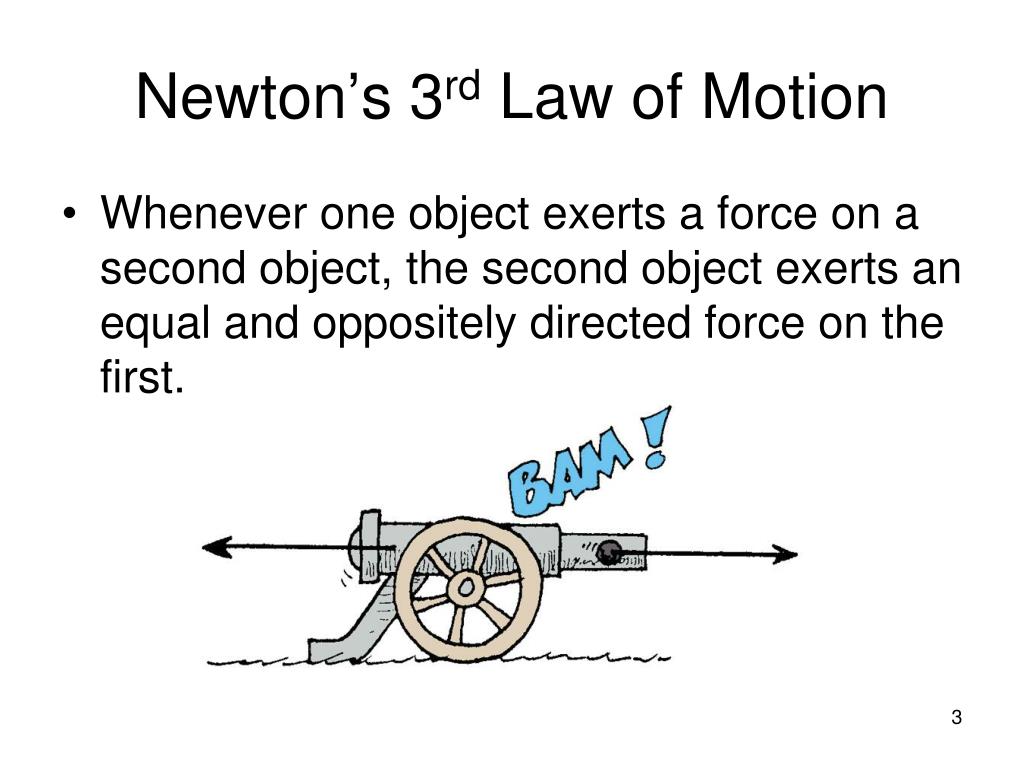

(note: this describes the reciprocal action of two particles upon each other, thus the action and reaction affect different particles). Newton's Third Law: Every action (force) has an equal and opposite reaction. This law introduces the concept of the intertial mass of an particle which is defined to be a property of the particle.) Action-reaction pairs include a swimmer pushing off a wall, helicopters creating lift by pushing air down, and an octopus propelling itself forward by ejecting water from its body. Since it includes the possibility of no action as a special case, it can be understood to generalize the first law. Newton’s third law of motion represents a basic symmetry in nature, with an experienced force equal in magnitude and opposite in direction to an exerted force. (note: this describes the effect of an action by the environment on the object.

If all the external forces cancel each other out, then there is no net force acting on the object. This tendency to resist changes in a state of motion is inertia. This is a rather simple observation and it is fairly intuitive. Newton’s first law states that every object will remain at rest or in uniform motion in a straight line unless compelled to change its state by the action of an external force. In mathematical form we write: F=ma, where F is the force exerted on the particle, m is the mass of the particle, and a is the acceleration of the particle. Newton’s first law states that an object will remain at rest, or in constant motion, unless acted upon by a force. Newton's Second Law: A particle subject to a force accelerates in the direction of the force, in proportion to the force, and inversely proportional to its mass. Newton's First Law: An isolated particle at rest or in motion stays at rest or in motion with the same velocity. Newton's Laws describe the behavior of a particle which may be subject to forces by its environment.


 0 kommentar(er)
0 kommentar(er)
